30 Unique Products and Items for a Green Sage Dorm Room
Decorating your dorm room is a fun way to make your space feel like home. If you're aiming for a...
We buy so you won’t have to! We earn commissions from recommended products, which fund testing new items by our team of experts. Thank you for your support!
Strelitzia Nicolai, also known as the White Bird of Paradise or Wild Banana, is one of the easiest large indoor plants to grow. Its big and shiny leaves can transform your home into an urban jungle, making it a desirable addition to any tall houseplant collection. Some people mistakenly identify it as a banana plant, and they indeed look alike. However, the key difference is in the leaf growth patterns.
Strelitzia Nicolai can flourish indoors, growing from 3 to 8 feet in height, while it can reach up to 20 feet as an outdoor plant.
If you’re interested in learning how to care for and grow this amazing indoor plant, keep reading.
Strelitzia Nicolai is indeed a low-maintenance houseplant. However, IT comes from the rainforests of southern Africa, and replicating tropical conditions in your home is key to keeping this large house plant healthy and growing.
tropical conditions might seem like a LOT OF WORK, but the truth is quite the opposite. just provide warmth, humidity, and shaded sunlight.
| other Names | White Bird of Paradise or Wild Banana, crane flower |
| Botanical Name | Strelitzia reginae, Strelitzia nicolai |
| Family | Strelitziaceae |
| Mature Size | 4-6 ft. tall, 4-4.5 ft. wide |
| Sun Exposure | full and shaded sunlight |
| Soil Type | well drainage soil |
| Soil pH | 5-6 ph soil |
| Bloom Time | From March to late April |
| Flower Color | Southern Africa |
| Hardiness Zones | 10-12 (USDA) |
| Native Area | Orange, white, blue, yellow |
| Toxicity | Orange, white, blue , yellow |
Find a warm spot in your home with a lot of indirect sunlight for your Strelitzia Nicolai. The best locations are rooms with windows facing the west or east sides. rooms with north-facing windows are not ideal for the Bird of Paradise.
Ideally, the plant should receive 4 to 6 hours of bright light each day for optimal growth. avoid direct sunlight as it can cause leaf burn. Additionally, keep the plant away from radiators for healthy leaves.
As Strelitzia Nicolai has large roots, it’s better to use a premium soil mix.
You may wonder what a premium soil mix is.
It is typically a soil mix containing ingredients such as coconut coir, vermiculite, pumice, perlite, and activated charcoal. These components promote proper drainage, which helps prevent many root issues.
Additionally, use a pot with drainage holes to allow excess water to flow out of the soil. This helps maintain the ideal moisture level for the plant’s roots.
Strelitzia Nicolai is a large indoor plant that prefers the soak-and-dry method of watering. In other words, it’s best to allow the soil to dry out completely before watering again. Then, you can water it until you see the water draining from its drainage holes.
During warm seasons, water the plant once a week. In winter, when the growth rate slows down, less frequent watering is needed.
so when to water Bird of Paradise?
test the soil moisture by pushing your thumb 2-3 inches into the soil. If it feels dry, you can water it.
Overwatering can result in crunchy brown leaves, while underwatering may cause yellowing leaves.

After researching Strelitzia Nicolai, we found that it is from southern Africa, which is known for its warm temperatures throughout the year. Therefore, the best temperature ranges for these plants are around 18-27°C or 60-80°F. When kept as a large indoor plant, it’s better to avoid placing your Bird of Paradise near heating sources such as radiators or air conditioners, as sudden temperature changes can harm this houseplant.
Strelitzia Nicolai, originating from South Africa, needs high humidity to grow. To provide the best humidity for this large houseplant, placing it near a humidifier can help maintain suitable moisture levels.
Like most houseplants, fertilizer is needed only during the Strelitzia Nicolai growing season. plus, White Bird of Paradise is a heavy feeder during warm seasons, as fertilizers help growth during these months. feed it once every two to three weeks with slow-release pellets or liquid fertilizer mixed with water.
However, in winter and autumn, it does not fertilize at all, as it gets into a state of dormancy. Over-fertilizing can lead to health issues such as root burning.


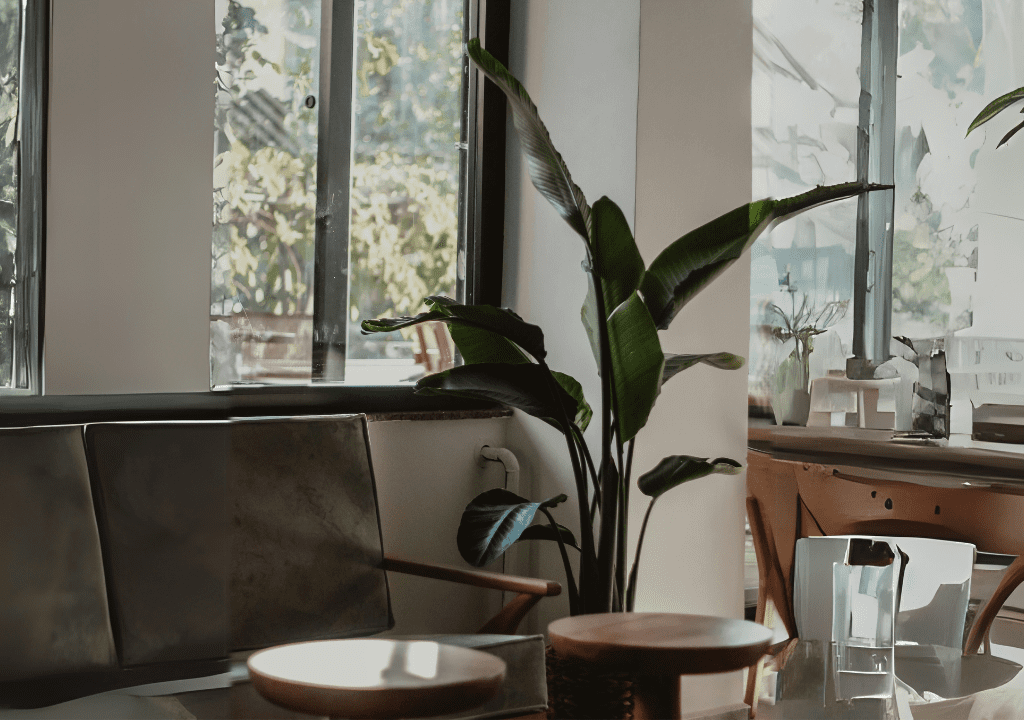
White Bird of Paradise as a tall houseplant
Pruning Strelitzia Nicolai is not typically necessary as it is a single-leaf stem plant. However, sometimes pruning can be beneficial, such as cutting off dead or damaged leaves to keep the plant healthy.
Pruning during the growing season allows the plant to recover quickly. Pruning in the dormant season may cause health problems.
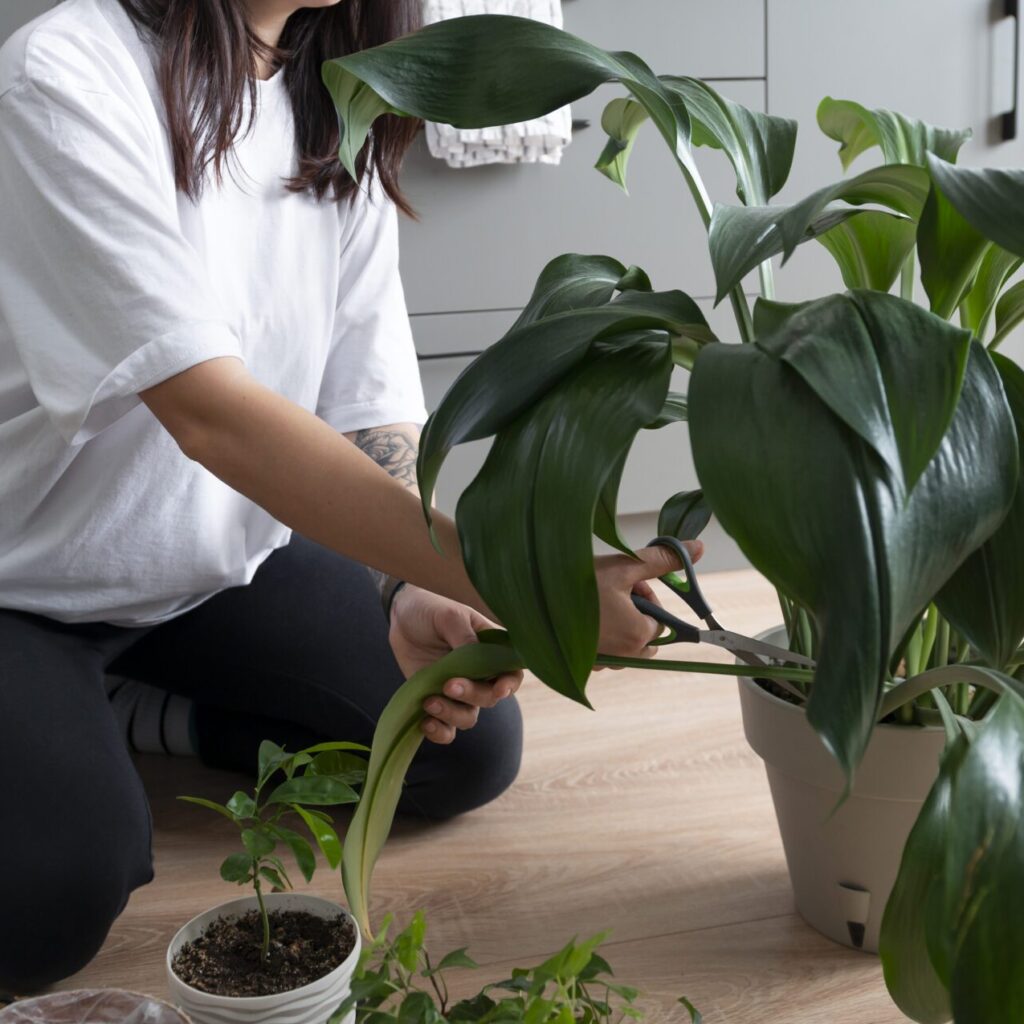
trimming White Bird of Paradise for a better look
When it comes to propagating Strelitzia Nicolai, there are two methods:
I prefer stem division each time as it’s easy and quick, and it allows you to gain a year or two of waiting time.
To propagate your large houseplant through stem division, follow these steps:
Prepare your tools for stem division. The tools you’ll need depend on the size of your houseplant. For larger, more mature plants that have been blooming for three to four years, you’ll require bigger tools such as a shovel and a saw.
However, for smaller plants, a sharp knife will be enough.
Make sure your tools are sharp and sterilized before starting with the propagation process. Start by carefully removing the plant from the pot. Be gentle during this process to avoid damaging the roots.
Identify mature, healthy stems on the plant. Carefully separate the desired stems from the main plant, ensuring clean cuts and avoiding damage to the plant tissue. This process should be relatively easy, even for beginners.
Now, all that’s left to do is to plant the divided stems in a well-draining soil mix.
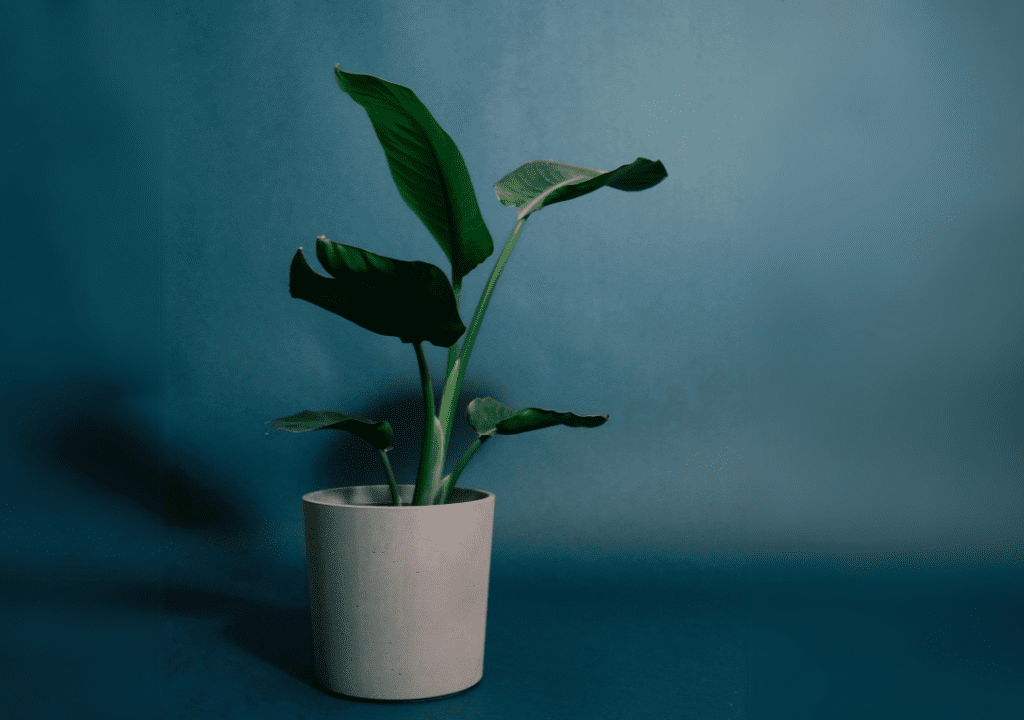
Every houseplant lover should know how to repot their plants, and Strelitzia Nicolai is no exception. Due to its fast growth, it’s recommended that it be repotted every couple of years.
The best time to repot the Bird of Paradise is in spring, typically from March to the beginning of May. Repotting is advised once you notice roots starting to show out of the top layer of soil. When selecting a new pot, opt for one that is slightly larger. Using a pot that is too large may result in excessive leaf growth and fewer flowers.
Carefully remove the plant from its container with the twist and squeeze method. Gently shake off as much old soil from the roots as possible. If necessary, you can use water to help loosen the soil from the roots. Be gentle to avoid damaging the roots during this process.
Place a drainage layer, such as small rocks or pebbles, at the bottom of the new pot. This layer will help ensure proper drainage for the plant. Then, add a layer of soil on top of the drainage layer.
Place the plant in the center of the new pot, positioning it vertically. Fill the gaps around the plant with soil, ensuring that the roots are completely covered. Press the soil down gently to fill any empty spots and secure the plant in place.
Choose a high-quality potting mix specifically designed for tropical plants or create a custom mix using ingredients such as perlite, coarse sand, and peat moss to promote excellent drainage.
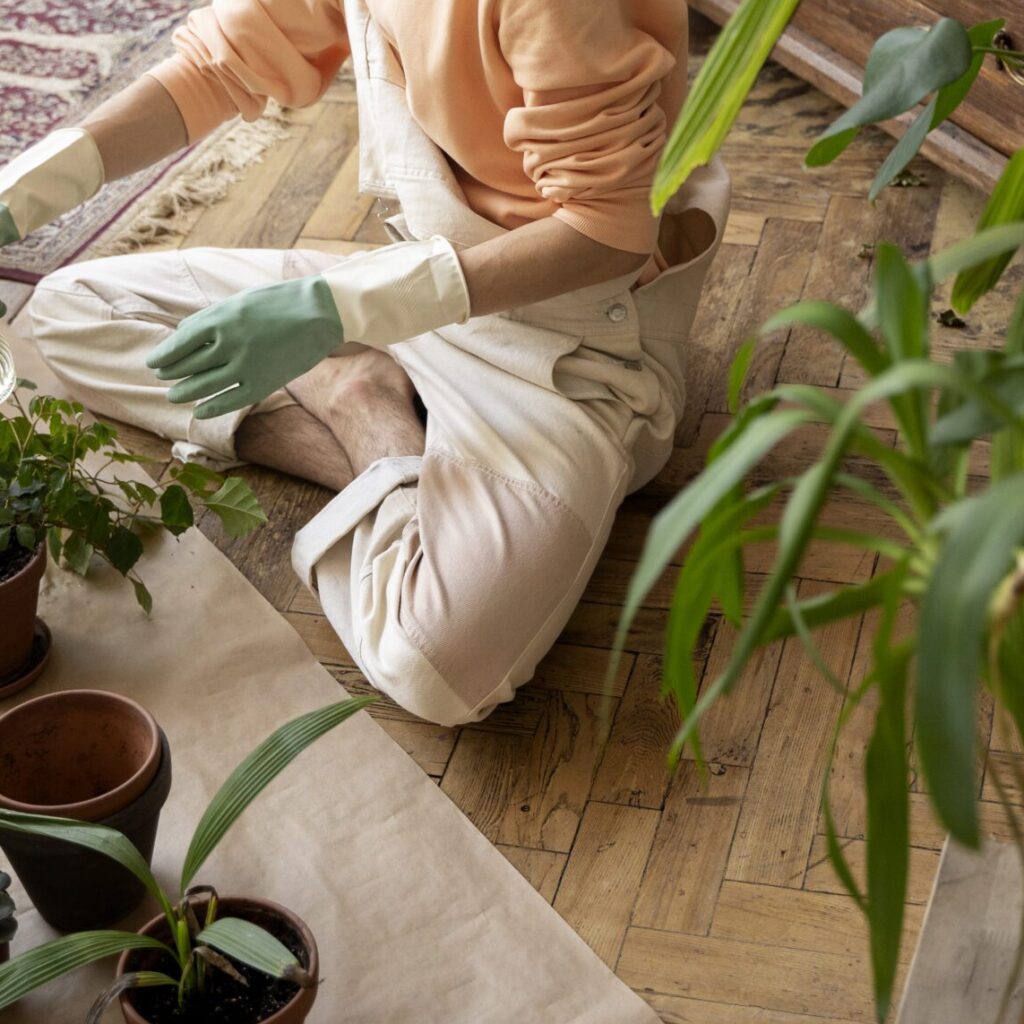
repoting White Bird of Paradise

Strelitzia Nicolai is a tropical plant, so freezing winters can kill it. If your plant is outdoors and you can bring it inside, it’s better to do so to protect it from cold temperatures.
If you live in a zone like USDA 9 and the temperature dips for only a short time, your Bird of Paradise plant can survive outdoors. However, it’s crucial to protect your plant from these temperature drops to ensure the plant’s survival.
To protect your Bird of Paradise during winter, cut leaves and stems above 12 inches long.
Protect the remaining stem and rhizome by applying a layer of mulch, followed by leaf litter and straw. Cover the entire area with breathable row cover material and secure it with stakes. Remove the coverings as soon as spring arrives and the threat of the last frost has passed.
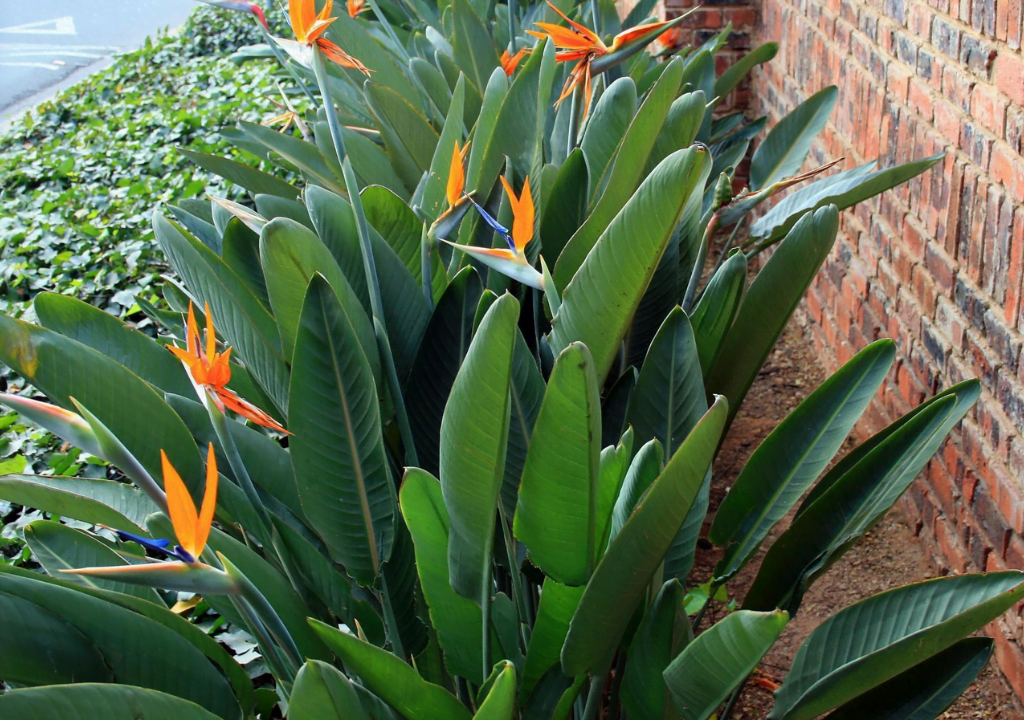
White Bird of Paradise blooming as an outside plant
If you want to understand why the Bird of Paradise plant gets its name, you need to witness its stunning bloom. Unfortunately, this spectacle is rare unless the plant is around 5 to 6 years old. However, if your houseplant is mature enough, follow these steps to encourage blooming:
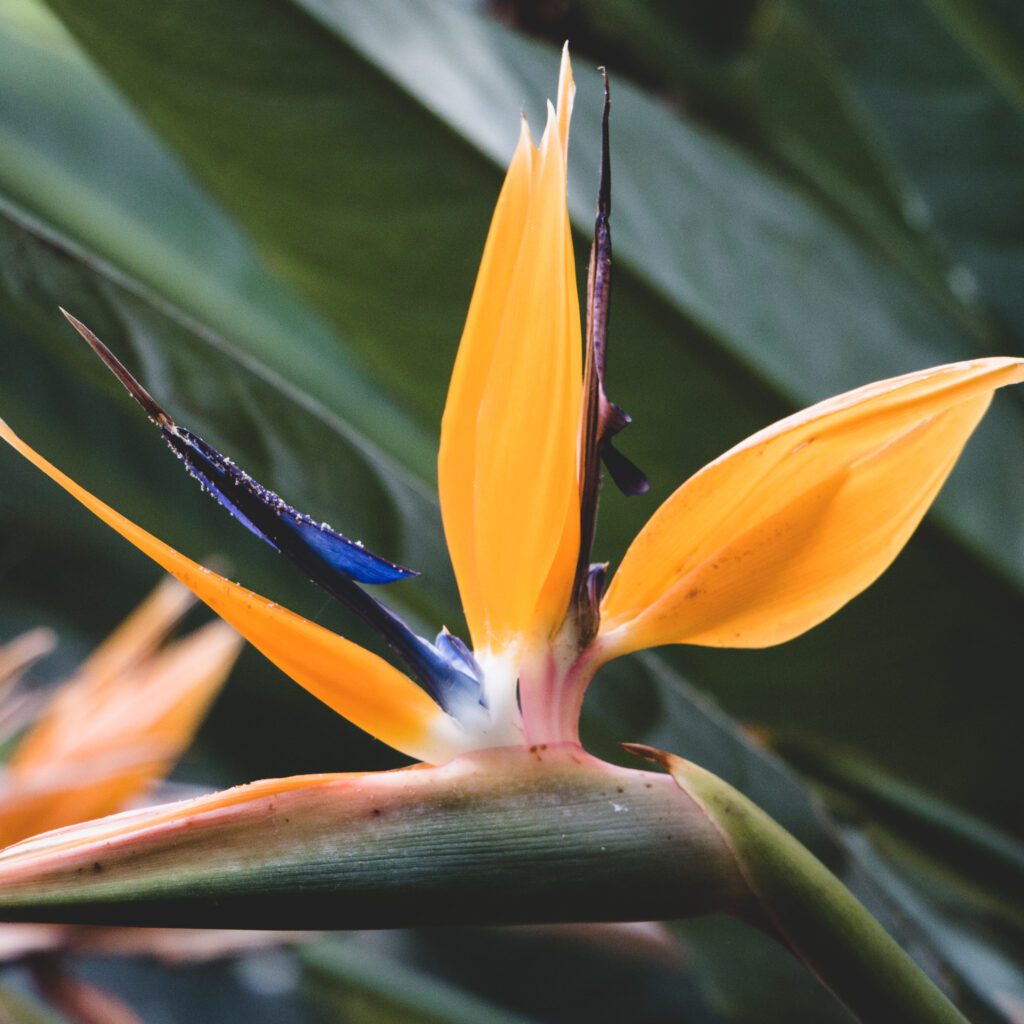
strelitzia nicolai flower | Image by Freepik
Strelitzia Nicolai can be targeted by various pests, including aphids, scales, and whiteflies. Therefore, it’s important to inspect the plant regularly for signs of infestation.
If you encounter pests, you can apply a simple treatment. Options include using alcohol or insecticidal soap applied to the undersides of the leaves.
Or you can use some gnat traps. I recommend the one that Oh Happy Plants offer, or to make pest control a hassle-free process, think of investing in a cleaning kit


Additionally, Bird of Paradise plants can be susceptible to grey mold, which is dark spots on the flowers and leaves. To prevent its spread, start by cutting off affected parts of the plant. Afterward, expose the plant to sunlight for 6 hours a day for three days.
Overall, Strelitzia Nicolai is one of the easiest large indoor plants to care for and grow. If you stay consistent in providing optimal conditions, it will remain healthy and strong for many years. However, neglecting any of its required conditions can lead to problems.
Strelitzia’s worst enemy is root rot, which is often caused by overwatering. This leads to soggy soil conditions that promote fungal growth and damage to the roots. To prevent root rot, it’s crucial to allow the soil to dry out completely between waterings. If you notice wilting or browning leaves, root rot has likely developed. Another sign will be a bad rotting smell coming from the roots.
To treat root rot, follow these steps:
If you notice that your plant’s leaves are curling, it means that you may be underwatering your plant. To fix this issue, you should maintain a proper watering routine. Ensure that water is freely passing throughout the soil to hydrate the plant adequately.
There are two possible reasons for your plant’s leaves turning yellow. The first reason is the most logical: aging. As plants age, older leaves naturally turn yellow and eventually drop off.
The second reason could be due to a lack of proper care. This could include low humidity levels, insufficient nutrients, or underwatering. To identify the cause, you can systematically test each factor.
Start with humidity. Mist your leaves and observe the results over a week or two. If there’s no improvement, try increasing the amount of water you give the plant during watering sessions. After two watering sessions, if the yellowing persists, consider adding liquid fertilizer to boost the plant’s nutrient intake.
By testing each factor, you can find the cause of yellowing leaves and take the best action to treat it.
If your plant’s leaves have some breaks and splits, it’s quite normal and not a cause for concern. These breaks and splits allow for air circulation around the leaves and roots, which is beneficial for the overall health of the plant. While you may perceive this as a problem, it helps prevent mold from developing and discourages pests from settling in the plant.
At Budge to Gadget, we only use reliable, up-to-date sources such as Research papers, books published by respected academic publishing houses, and articles written by well-respected authors. To support the information in our articles. Read our sourcing and fact-check process to learn more about how we fact-check and maintain our material’s accuracy, dependability, and trustworthiness.
Strelitzia Nicolai can handle some direct sunlight, but it’s best to avoid harsh, intense rays to prevent leaf damage.
Brown leaves on your Strelitzia may indicate overwatering, lack of humidity, or too much direct sunlight. Adjusting watering and light levels can help.
Strelitzia Nicolai thrives in bright, indirect light, well-draining soil, and regular watering when the top inch of soil feels dry.
The best houseplant for low-light apartments is the Snake Plant.

kahla akram is a professional home decorator, interior designer, and master gardener writer. he is also a seasoned expert horticulturist, with a wealth of experience and a string of impressive achievements. his work has been featured in a multitude of global magazines, and he operates under his highly respected brand, budge to gadget.
Decorating your dorm room is a fun way to make your space feel like home. If you're aiming for a...
Moving into a dorm room is an exciting milestone, but it can also be a bit overwhelming. You want your...
Hey there! If you're looking to add some pizzazz to your home decor, funky painted furniture is the way to...
Starting college is an exciting journey filled with new experiences and challenges. One of the key aspects of settling into...
Moving into a dorm room can be a big change, but with the right design, you can make it feel...
Subscribe to our newsletter for the latest decoration designs, ideas, and tips. Stay connected with us!